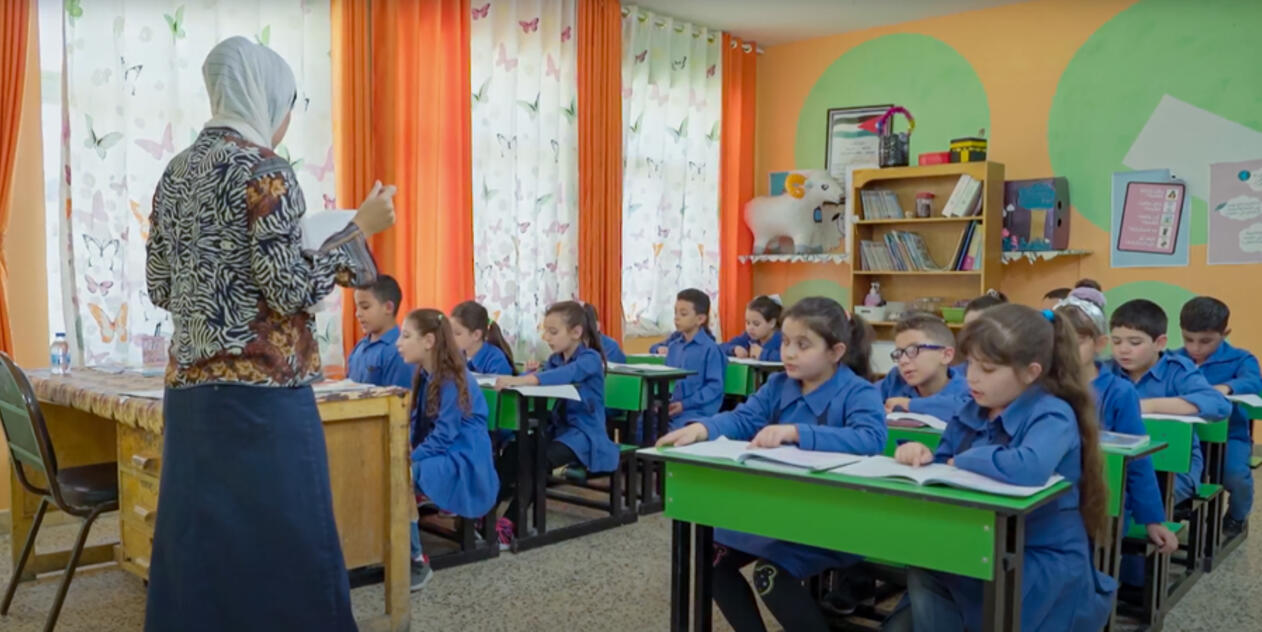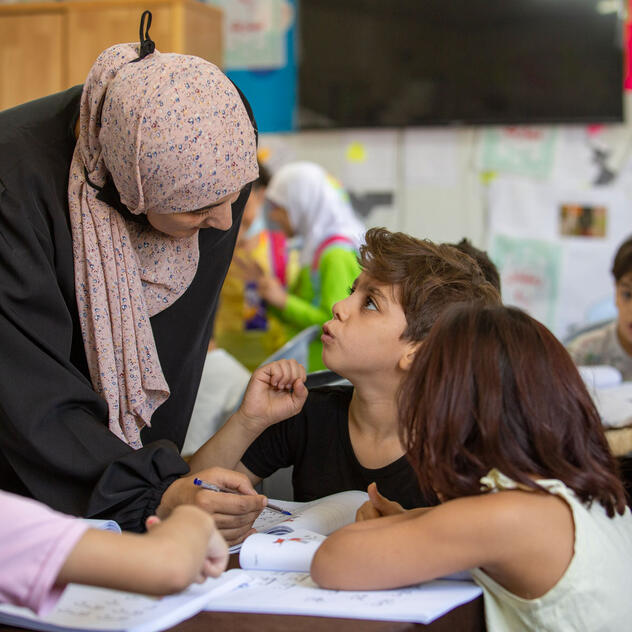Our aspiration is quality education for all children, it's the gateway to their future, and society's success and prosperity. Our focus is on improving students' Arabic literacy skills as it is the most crucial factor that enables learning in and beyond the classroom. For this to become reality we must all work together to enable and promote quality education in every aspect: homes and parental practices, schools and classrooms, and the systems and policies.

“The real treasure is in the minds of our children, and all we have to do is extract it.”
Her Majesty Queen Rania Al Abdullah
OUR IMPACT AT A GLANCE
 85,956
Educators benefited from QRTA's training programs
85,956
Educators benefited from QRTA's training programs
 6M
Arabic-speaking learners signed up to Edraak's online courses
6M
Arabic-speaking learners signed up to Edraak's online courses
 2M
Users downloaded the “Karim and Jana” applications
2M
Users downloaded the “Karim and Jana” applications
Advancing Arabic Language Teaching and Learning: A Path to Reducing Learning Poverty in MENA
More than half of children in the Middle East and North African (MENA) countries are in learning poverty — they cannot read and understand an age-appropriate text by age 10. This is preventing the region’s children from fully engaging in their education and holding back countries’ progress in human capital formation. A myriad of factors influences this outcome, but many factors can be addressed through changes in education policy and programing related to the teaching and learning of Arabic.
The World Bank’s Advancing Arabic Language Teaching and Learning: A Path to Reducing Learning Poverty in MENA report, which was released on June 29, identifies and explores these factors and proposes a path for countries in the region to make the teaching and learning of Arabic more effective.





